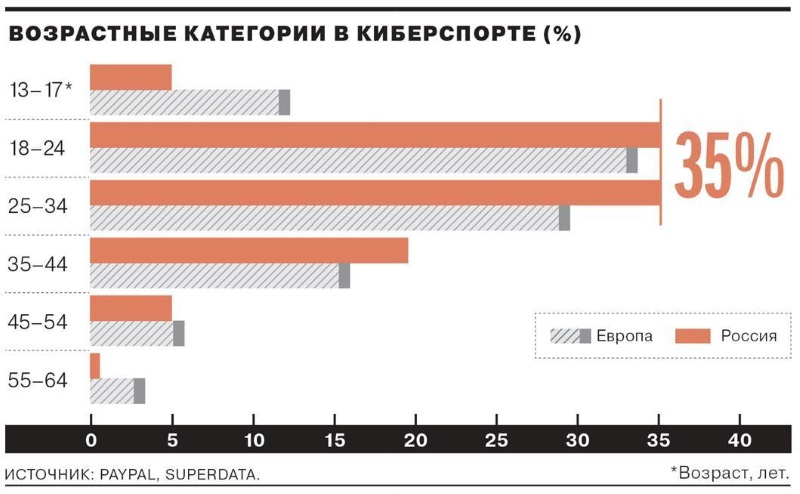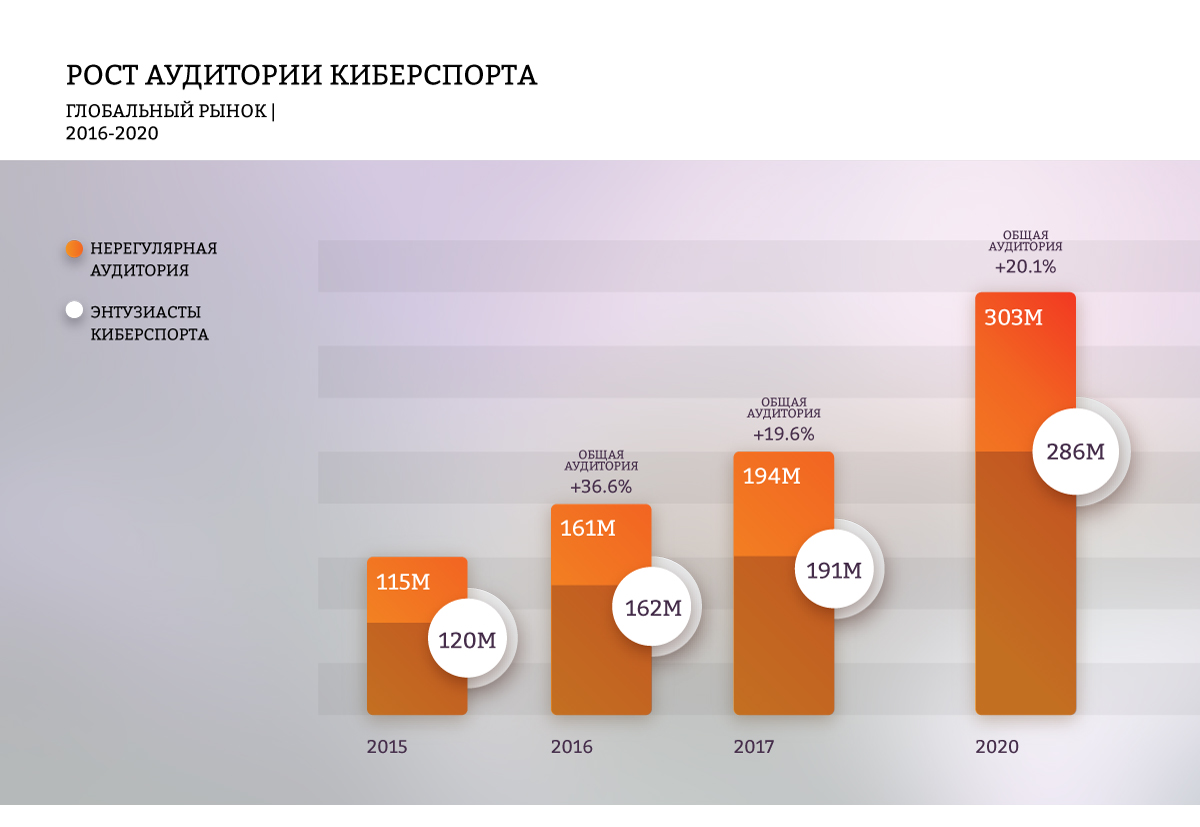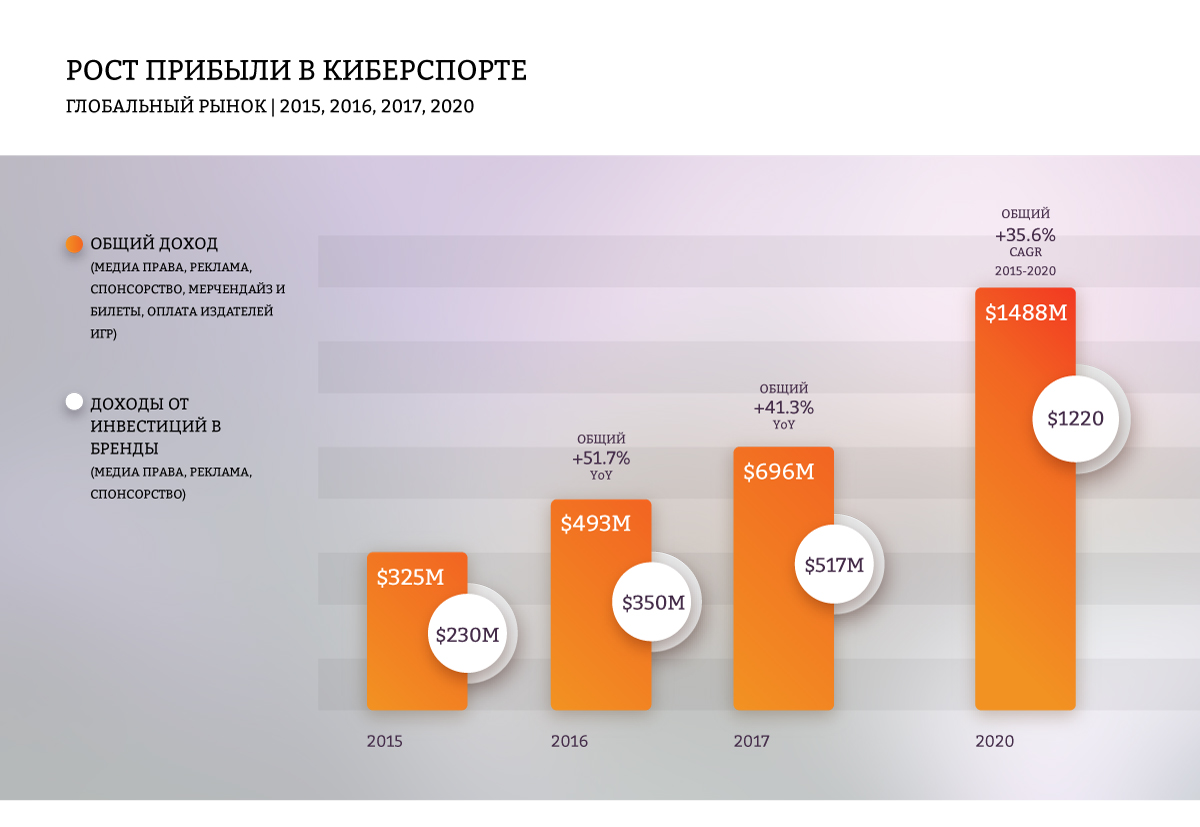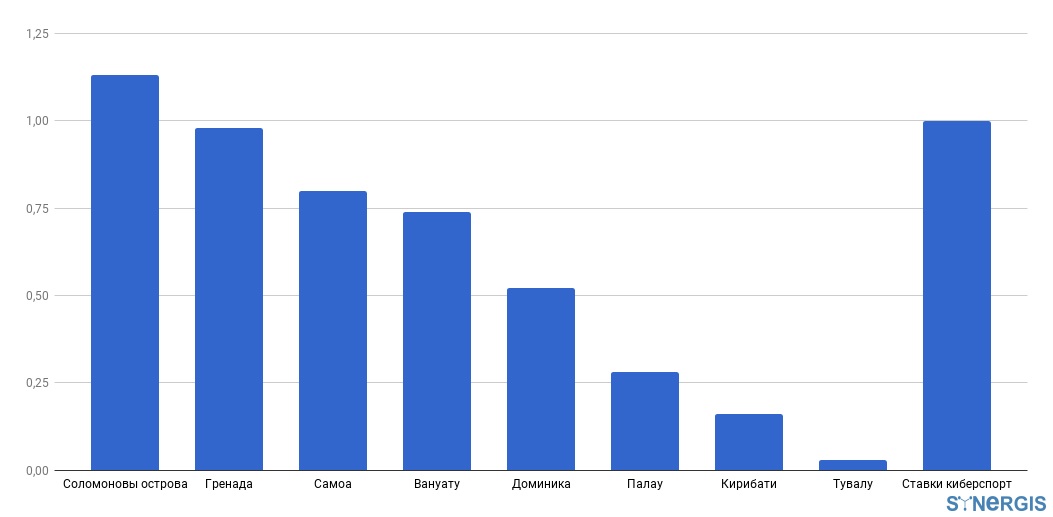Trillion Markets, or have time to do in 10 years
Today I begin a large-scale study of the leading markets in the IT sphere , namely:
The list will be continued if the material is useful, interesting and important for the community. The following elements will be described in each section:
And I'll start with eSports. Why?
The answer is simple: in the past few months, this is the direction that worries me the most, because I have already become, apparently, too old to fully understand how people can watch a video about games, catching up unthinkable traffic on youtube channels. In addition, I was always interested in large-scale solutions: cybersport - just about that.
')
General description of the industry
I will not go far for the definition, I’ll look at Wiki: “eSports, also referred to as computer sports or electronic sports, is a type of competitive activity and special practice of preparing for video game based competitions, where the game provides an environment for control objects interaction, ensuring equal conditions for human competitions with person or team with a team. ”
The cyber sport market is an amazing phenomenon in every sense. Judge for yourself: according to PayPal, its audience is as follows:

Perhaps for many there are no revelations and discoveries, but not for me: the share of those who are 25-34 is not less than those who are 18-24, and besides - there is not a small percentage of those who are over 35 This, to be honest, for me was a personal America. To be extremely precise, then: “the average Russian eSports lover is older than the representative of Europe. In the Russian Federation, the most significant age group is from 25 to 34 years old (35%). Only 5% of Russian cybersportsmen are very young at the age of 13-17 years. ”
However, these figures may vary: depending on the season, sources and other factors. Here is a case in point:

But this is not the only discovery made by me personally from the field of virtual sports: for example, video viewing. This is a whole, unidentified world.
In order to assess the scale of the industry, let us turn to indicators of audience growth (they are, frankly, outrageous):

That is, for some five years - the increase is expected to double. And this is only for the audience. And now let's see how much it can be in money (the information here and on the chart above is taken when analyzing the WhitePaper Eloplay):

However, let's put the numbers in a separate subsection and consider them in more detail.
Numbers
To assess the capabilities of the cyber sports market - we need examples. Perhaps one of the brightest is The International - Dota 2, the first in the discipline, and the largest annual tournament among others. Here is a summary graph of the growth of the prize fund from 2011 to 2017 (data taken from the Wiki):

That is, growth from the standard 1 million - 250 thousand - 150 thousand (for the first, second and third place respectively) to 10 million plus - for the period not only clearly confirms the potential of the industry as a whole, but also indicates what amounts are hidden in future. By the way, we have already tried this potential more than once through classical sports: like, say, here.
Revenue from rates from 500,000,000 to 1,000,000,000 dollars (according to Newzoo, SuperData, and several other sources), that is, according to capitalization, this market is comparable with small states:

Of course, up to the USA, China or Russia there are still one hundred and fifty positions and even more, but nevertheless - this is already loud and interesting. Moreover, the market is still quite young, which means - the growth potential, again, is laid a priori.
So, for example, the history of eSports in infographics from RBC looks like:

That is only 10 years old. And right now the fun begins here.
There are many areas of development - I’ll mark only a few:
Of course, there are a dozen more directions: for the same VR, for organizing tournaments, for creating ratings of players, for monetization of various areas of eSports ... But in this case we’ll leave the study on the border of the whole book and therefore - I’ll leave only general points as the players say, and take the next step - consider one of the examples: eloplay. True, not today.
On the whole, the conclusions on the industry were unexpected for me: it was not only the growth that was pledged for the exhibitor (including the audience, the profit, and other indicators), but also the gradual transition of eSports from the field of “hobbies for everyone and few, in the field of state regulation and even in the category of the Olympic sport, which, of course, will generate unprecedented demand, where any proposals for tokenization and automation will be literally taken out of hand. However, this is also not today.
- Cybersport;
- IoT (Interent of things);
- Blockchain;
- ...
The list will be continued if the material is useful, interesting and important for the community. The following elements will be described in each section:
- General vision of the market;
- Figures and facts;
- Niches which are closed by new projects.
And I'll start with eSports. Why?
The answer is simple: in the past few months, this is the direction that worries me the most, because I have already become, apparently, too old to fully understand how people can watch a video about games, catching up unthinkable traffic on youtube channels. In addition, I was always interested in large-scale solutions: cybersport - just about that.
')
General description of the industry
I will not go far for the definition, I’ll look at Wiki: “eSports, also referred to as computer sports or electronic sports, is a type of competitive activity and special practice of preparing for video game based competitions, where the game provides an environment for control objects interaction, ensuring equal conditions for human competitions with person or team with a team. ”
The cyber sport market is an amazing phenomenon in every sense. Judge for yourself: according to PayPal, its audience is as follows:

Perhaps for many there are no revelations and discoveries, but not for me: the share of those who are 25-34 is not less than those who are 18-24, and besides - there is not a small percentage of those who are over 35 This, to be honest, for me was a personal America. To be extremely precise, then: “the average Russian eSports lover is older than the representative of Europe. In the Russian Federation, the most significant age group is from 25 to 34 years old (35%). Only 5% of Russian cybersportsmen are very young at the age of 13-17 years. ”
However, these figures may vary: depending on the season, sources and other factors. Here is a case in point:

But this is not the only discovery made by me personally from the field of virtual sports: for example, video viewing. This is a whole, unidentified world.
In order to assess the scale of the industry, let us turn to indicators of audience growth (they are, frankly, outrageous):

That is, for some five years - the increase is expected to double. And this is only for the audience. And now let's see how much it can be in money (the information here and on the chart above is taken when analyzing the WhitePaper Eloplay):

However, let's put the numbers in a separate subsection and consider them in more detail.
Numbers
To assess the capabilities of the cyber sports market - we need examples. Perhaps one of the brightest is The International - Dota 2, the first in the discipline, and the largest annual tournament among others. Here is a summary graph of the growth of the prize fund from 2011 to 2017 (data taken from the Wiki):

That is, growth from the standard 1 million - 250 thousand - 150 thousand (for the first, second and third place respectively) to 10 million plus - for the period not only clearly confirms the potential of the industry as a whole, but also indicates what amounts are hidden in future. By the way, we have already tried this potential more than once through classical sports: like, say, here.
Revenue from rates from 500,000,000 to 1,000,000,000 dollars (according to Newzoo, SuperData, and several other sources), that is, according to capitalization, this market is comparable with small states:

Of course, up to the USA, China or Russia there are still one hundred and fifty positions and even more, but nevertheless - this is already loud and interesting. Moreover, the market is still quite young, which means - the growth potential, again, is laid a priori.
So, for example, the history of eSports in infographics from RBC looks like:

That is only 10 years old. And right now the fun begins here.
There are many areas of development - I’ll mark only a few:
- In my opinion, one of the most promising areas is the combination of markets: in particular, the blockchain and e-sports. This, for example, is done by eloplay.com - a project that focused not only on cyber money, like the same gamecoin, not narrowly, on streaming game videos, but on doing the main thing (for the industry) - to create ad hoc tournaments, where everyone can meet with everyone (but tournaments can collect 500, 1000 and more players), and plus to this - assign a prize fund and play it according to smart contracts, as stated in the record: “let's say it turned out to build a tournament for 500 teams , if players drop $ 10 per team (this is $ 2 per hour Lovek) - prize pool of $ 5,000 ... We give the opportunity to form decentralized prize pool - first of all it will do the players themselves, the second - the brands that want to communicate with the audience through the most eSports channel "native to them. The project has already come across to me, so I will follow it carefully and, I hope, I will tell you in one of the issues of the Habr blog in more detail. By the way, you can talk with the project in the open spaces of Telegram-Ocean, and it is here - t.me/ico_eloplaycom_ru .
- Recently, I was able to meet with one of the most famous top managers in the field of e-sports crowd Alexey Burdyko, who brought my partners a new product for evaluation (which one I can’t say yet: only in a very general form). Of course, since Burdyko - then we are talking about the video. If about video from Burdyko, then about video about games. And this is also a great future: a VR channel is developing now, which will eventually become YouTube 2.0, the users themselves are on the path of gamification of everything and everything on the one hand, and on the other, the monetization of the same everything. Of course, here the competition is growing day by day and pyshsha, but that makes everything just more fun and more fervent: of course, if I correctly understood the breath of the market for it.
- The history of the xsolla team (formerly 2pay) inspires many: a simple Ural guy built an international company and even went there. And, if, before the blockchain appeared, this giant could only be talked about creating a competitor, today there are solutions that are ready to bring not only fresh breath into the niche, but also blood to make up for healthy competition. At least that's how I see gamecoin and its future: universalization of payments by virtual currency within the virtual world. In my opinion, it sounds interesting and even promising, especially for those who know what the 2nd Life economy is and how it works.
Of course, there are a dozen more directions: for the same VR, for organizing tournaments, for creating ratings of players, for monetization of various areas of eSports ... But in this case we’ll leave the study on the border of the whole book and therefore - I’ll leave only general points as the players say, and take the next step - consider one of the examples: eloplay. True, not today.
On the whole, the conclusions on the industry were unexpected for me: it was not only the growth that was pledged for the exhibitor (including the audience, the profit, and other indicators), but also the gradual transition of eSports from the field of “hobbies for everyone and few, in the field of state regulation and even in the category of the Olympic sport, which, of course, will generate unprecedented demand, where any proposals for tokenization and automation will be literally taken out of hand. However, this is also not today.
Source: https://habr.com/ru/post/339274/
All Articles